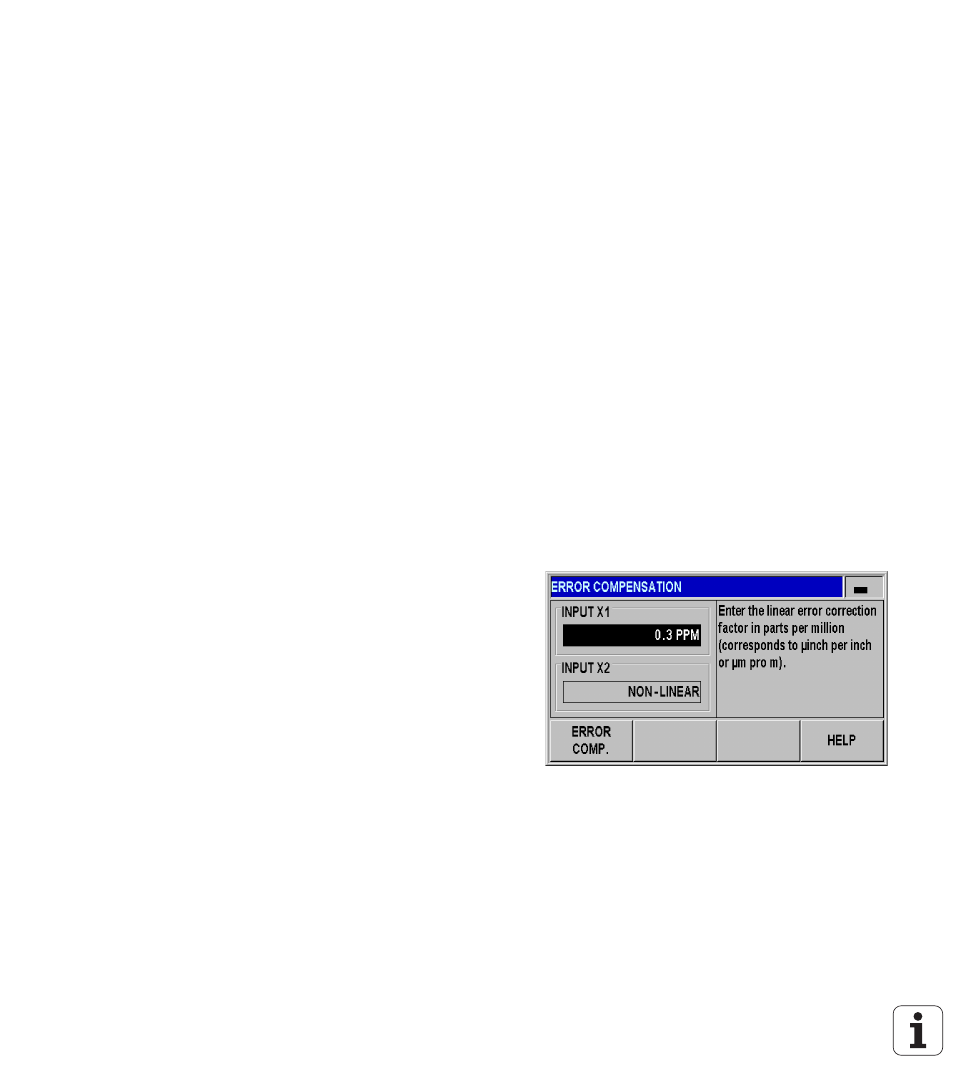Ii – 2 installation set u p – HEIDENHAIN ND 287 User Manual User Manual
Page 80

80
II Installation, specifications
II – 2 Installation Set
u
p
Linear error compensation (not for rotary encoders)
Linear error compensation can be applied if the results of the
comparison with a reference standard show a linear deviation over the
whole measuring length. In this case the ND 287 can compensate the
error mathematically by calculating the LEC correction factor.
To calculate the linear correction factor, use the following formula:
Example:
If the length of the standard you used is 500 mm and the measured
length along the X axis is 499.95 mm, then the LEC for the X axis is
100 ppm:
Entering linear error compensation
In the INSTALLATION SETUP menu, select ERROR
COMPENSATION.
If you have configured the ND for two axes in the APPLICATION
field under COUNTER SETTINGS, you can define error
compensation for the two possible encoder inputs, labelled INPUT
X1 and X2.
Select the input you want to define.
Press the ERROR COMP. soft key to select the desired type of
compensation.
If you select OFF, no error compensation will be applied.
0.0 PPM: Use the numerical keys to enter the linear correction
factor in ppm.
NONLINEAR (see "Non-linear error compensation" on page 81).
If necessary, press the UP/DOWN arrow key to select the next
input, and define the error compensation for this input.
Press ENTER to confirm your entries.
S:
length measured with reference standard
M:
measured length with device at axis
ppm: parts per million
1 ppm = 10
-6
= 1 µm/m = 1 µinch/inch
LEC
S M
–
M
------------------
106
×
ppm
=
LEC
500
499 95
,
(
)
–
499 95
,
------------------------------------------------
106
×
ppm
100ppm
=
=
Fig. II.31 Linear error compensation form
